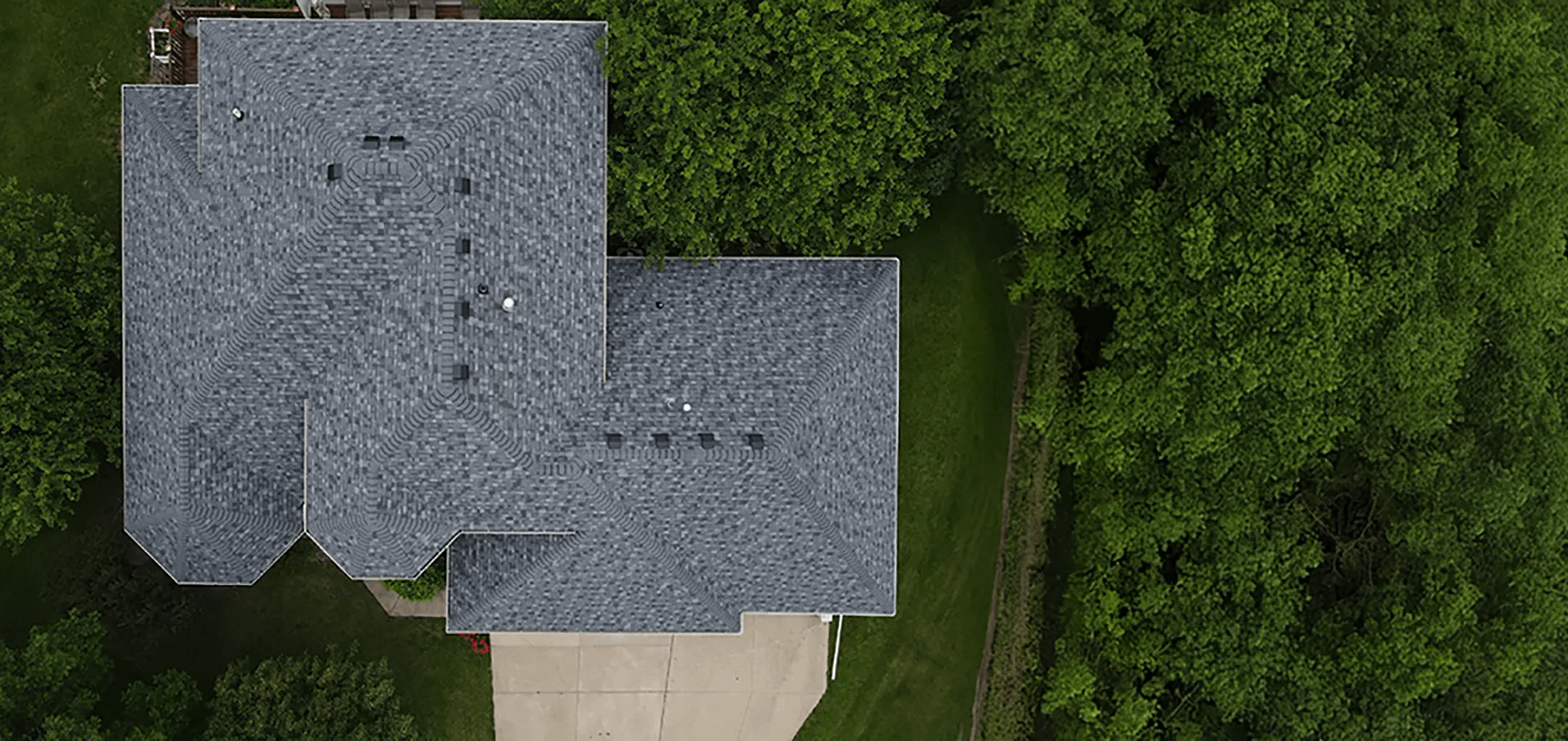Finding moss on roof shingles can be frustrating for homeowners. While moss may look harmless at first, its growth can cause long-term damage to your roof if left untreated. Moss thrives in damp, shaded environments and spreads quickly, breaking down roofing materials and shortening your roof’s lifespan. Understanding what causes moss to grow and how to prevent it is key to keeping your roof strong, attractive, and long-lasting.
- Identify causes: Learn why moss develops on residential roofs.
- Prevent damage: Stop moss before it weakens shingles or causes leaks.
- Protect investment: Keep your home looking great and your roof performing its best.
🌱 4 Reasons Why Moss Grows on Roofs
Moss is a plant that thrives in damp, shaded areas with limited airflow. Roofs provide the perfect environment for growth when certain conditions exist.
- Shade and Lack of Sunlight: If your home is surrounded by tall trees or sits in a shaded area, your roof is more likely to grow moss. Without direct sunlight, moisture lingers longer, creating the perfect environment for moss spores to settle and spread.
- Moisture Retention: Rain, dew, and humidity contribute to roof dampness. Asphalt shingles with rough textures can hold water longer than smooth surfaces, encouraging moss growth. Poor drainage or clogged gutters can make the problem worse.
- Organic Debris: Leaves, pine needles, and twigs that accumulate on your roof trap moisture and create a nutrient-rich environment where moss can thrive. Roofs that are not regularly cleaned are more prone to heavy moss buildup.
- Climate Conditions: Homes in regions with high rainfall, humidity, or mild winters are particularly vulnerable. Moss remains dormant during dry spells but quickly reactivates when conditions are favorable.

❗️ How Moss Damages Your Roof
While moss itself does not directly eat away at roofing materials, the way it grows can lead to costly problems over time.
- Shingle deterioration: Moss retains moisture against shingles, causing them to warp, crack, or separate.
- Leaks and water damage: As shingles lift, water can seep into the roof deck and attic.
- Ice dams: In colder climates, moisture held by moss can freeze and expand, worsening shingle damage.
- Shortened lifespan: Roofs with heavy moss often need replacement years earlier than well-maintained roofs.
- Curb appeal issues: A moss-covered roof makes a home look neglected, potentially lowering property value.
⭐️ Safe Ways To Remove Moss
If you notice moss on roof shingles, it’s important to remove it carefully to avoid damaging your roof.
- Gentle Cleaning: Use a soft-bristled brush to lightly sweep moss from the shingles. Avoid pressure washing, which can strip away protective granules from asphalt shingles.
- Moss Treatment Solutions: Commercial moss-killing sprays are available, but they should be applied according to manufacturer instructions to avoid harming landscaping or gutters. Many are zinc or potassium-based, which safely kill moss without damaging shingles.
- Professional Cleaning: For large or stubborn infestations, it’s best to hire a roofing professional. They have the right tools and techniques to remove moss safely without compromising the roof’s integrity.

✅ Preventing Moss Growth
Prevention is always easier and more cost-effective than repeated removal. Homeowners can take several proactive steps to stop moss from returning.
- Improve Sun Exposure: Trim back overhanging tree branches to allow more sunlight to reach the roof. Increased exposure helps keep shingles dry and less inviting to moss spores.
- Maintain Clean Gutters: Clogged gutters trap moisture and contribute to damp roof conditions. Cleaning gutters at least twice a year keeps water flowing away from your home.
- Install Zinc or Copper Strips: Metal strips placed near the roof ridge release particles when it rains, creating an environment where moss cannot thrive. This method provides long-term protection.
- Regular Roof Maintenance: Schedule annual roof inspections and cleanings. Removing leaves and debris before they break down prevents the buildup of organic matter that moss feeds on.
- Improve Ventilation: Proper attic ventilation helps reduce moisture buildup from inside the home. This lowers the overall dampness of the roof structure.
❗️ Common Moss Removal Mistakes Homeowners Should Avoid
Many homeowners unknowingly make moss problems worse by trying the wrong solutions.
- Using harsh chemicals: Bleach and chlorine-based products can damage shingles and harm plants.
- Pressure washing: High-pressure water strips protective shingle layers and can cause leaks.
- Neglecting prevention: Removing moss once without addressing the cause leads to quick regrowth.
- DIY on steep roofs: Safety should always come first — hire professionals for roofs that are unsafe to access.
📞 When To Call a Professional
Sometimes moss is a symptom of larger roofing issues. If you notice any of the following, it’s time to consult a roofer:
- Extensive moss covering large roof areas.
- Shingles that appear curled, cracked, or missing.
- Signs of leaks in the attic or ceiling.
- Roof age exceeding 15–20 years.
Professional roofers not only remove moss but also assess whether repairs or replacement may be necessary.

⏳ Long-Term Benefits of Preventing Moss
Preventing moss growth offers more than just a clean-looking roof.
- Extended roof lifespan: A moss-free roof lasts years longer.
- Lower maintenance costs: Prevention reduces the need for repeated cleanings.
- Improved efficiency: Dry, clean shingles perform better against heat and cold.
- Higher property value: A well-maintained roof boosts curb appeal and reassures potential buyers.
🧽 Protect Your Roof With Professional Help
Finding moss on roof shingles doesn’t mean you have to panic, but it does mean you should take action. By understanding what causes moss, removing it safely, and taking steps to prevent it from coming back, you can extend the life of your roof and avoid unnecessary costs.
At Young Construction, we help homeowners protect their roofs with expert maintenance, repair, and replacement services. If you’re ready to keep your roof in top shape, contact Young Construction today for a free quote.

